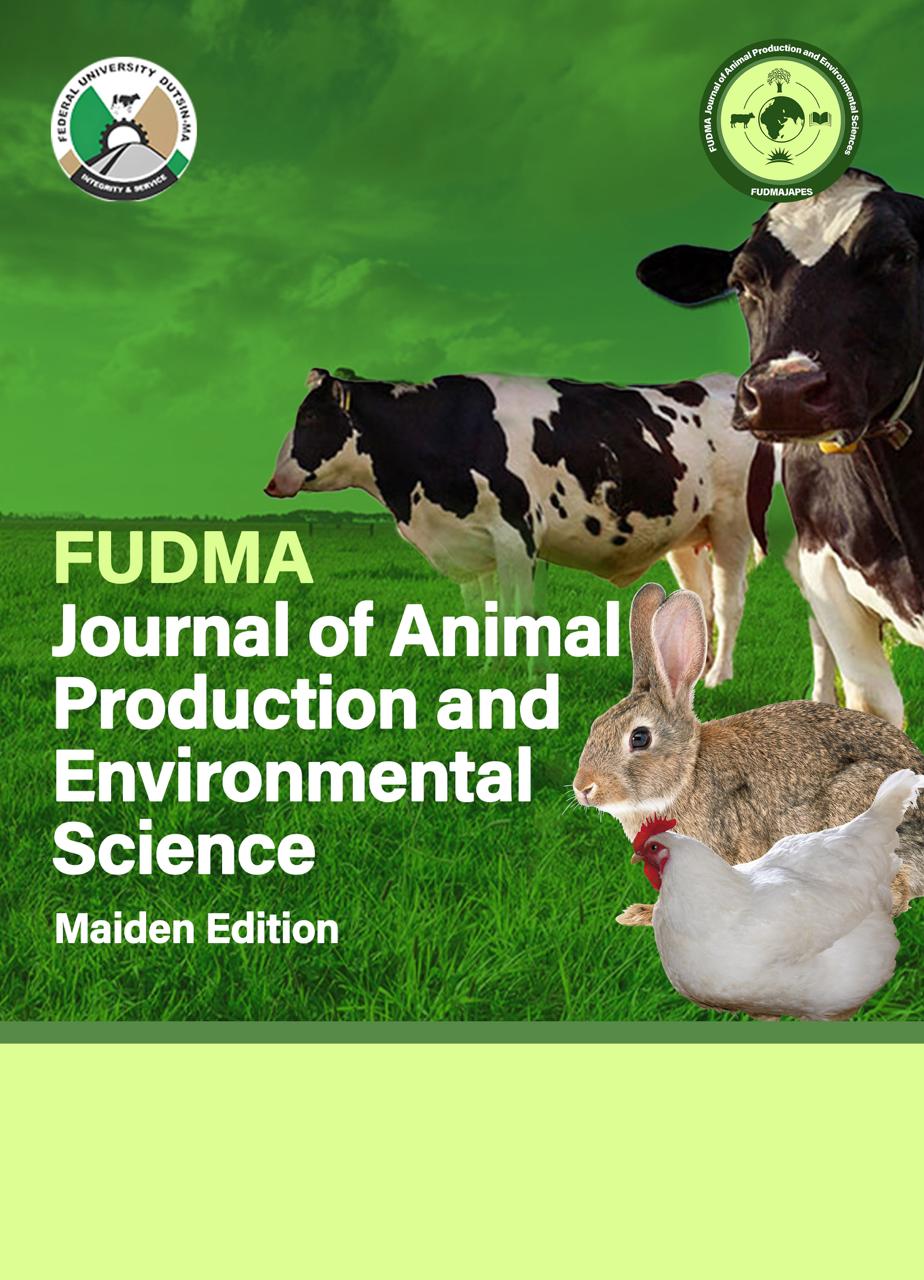INFLUENCE OF FEVER BARK STEM BARK EXTRACTS ON ESTRUS SYNCHRONIZATION AND REPRODUCTIVE PERFORMANCE OF BUNAJI HEIFERS IN ADAMAWA STATE
DOI:
https://doi.org/10.33003/japes.2025.v1i1.96-103Keywords:
Crossopteryx febrifuga, Extracts, Heifers, PGF2α, SynchronizationAbstract
This research conducted to assess the efficacy of Crossopteryx febrifuga (fever bark) stem bark extracts on estrus synchronization of Bunaji heifers. Fifteen Bunaji heifers aged between three and four years and two bulls were used to determine the onset of estrus and conception rates. The heifers allotted to five different treatment groups, T₁, T₂, T₃, T₄, and T₅, for ethyl acetate, ethanol, aqueous extracts, PGF₂α and placebo as positive and negative controls respectively. Each treatment was replicated three times. Of the three heifers administered with ethyl acetate, a heifer displayed heat within 24-46hrs, one heifer in 48-72hrs and the remaining heifer greater than 96 hrs. Similarly, animals administered with Ethanol, one showed heat within 24 -48hrs, one in 48-72hrs and one above 96hrs. Furthermore, one heifer came on heat in 48-72hrs and the remaining two greater than 96hrs after the administration of aqueous extracts. Two heifers showed heat in 24-48 hrs, while the remaining in 48-72hrs when administered with PGF2α. All the heifers in control group were negative. The presence of squamous epithelial cells, cornified epithelial cells, and spermatozoa in the heifers administered with the extracts and PGF₂α is a confirmation that the heifers were on heat. The estrus and conception rates were 100,100,100 and 66.67% for Ethyl acetate and Ethanol, PGF₂α and Aqueous extracts respectively. PGF₂α, ethyl acetate, and ethanolic extracts were better synchronizing agents compared to the aqueous extract indicating that the extracts contained phytochemicals and hormones of veterinary importance. Ethanol and ethyl acetate extracts recommended as alternative to synthetic synchronizing agents.






